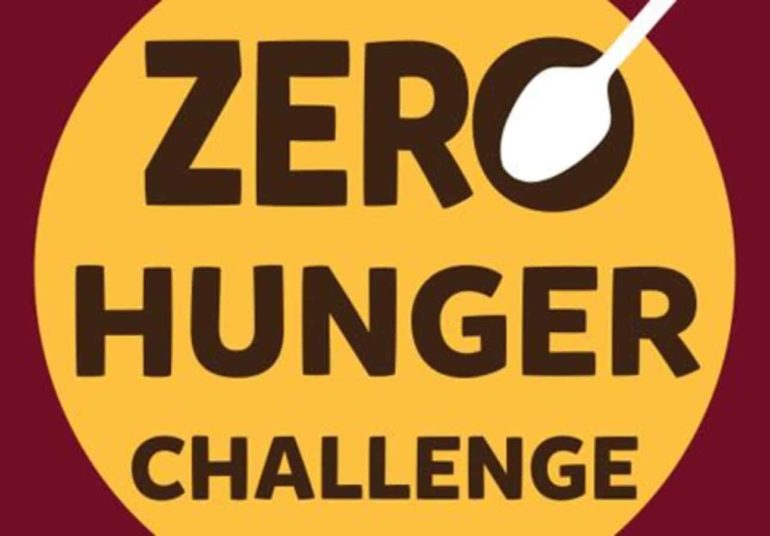This is a guest article written by José Graziano da Silva (U.N. Food and Agriculture Organization), Kanayo F. Nwanze (International Fund for Agricultural Development), and Ertharin Cousin (World Food Programme).
The number of undernourished people in the world has been brought down by over two hundred million since 1990 mainly thanks to increased political commitments to act against hunger. This has happened even as the planet’s population grew by two billion – and despite higher cereal prices starting almost a decade ago and the more recent global economic slowdown. This tells us that a world without hunger is not a dream, but something we can make real.
This year marks the endpoint of the efforts associated with reaching the first Millennium Development Goal (MDG) hunger target, which aimed at halving the proportion of hungry people in developing countries. A majority of the countries monitored – 72 out of 129 –have achieved the MDG hunger target and developing regions as a whole missed it by a small margin. Today, just under 13 percent of the developing world’s population is undernourished, down from 23.3 percent in 1990.
Still, hunger remains a grim reality for almost 795 million people, or one out of nine persons worldwide, according to our latest global assessment. So we need to aim higher –to make hunger history.
In September 2015, the international community will agree on a new set of Sustainable Development Goals (SDGs), which should include a commitment to eradicate hunger and poverty by 2030. As the world population is expected to increase by another two billion people by 2050, we will have to act fast and more decisively.
We can win the war against hunger, provided we strengthen access to food, sustainability becomes our watchword, and we adequately address the challenge of climate change. We must produce more with less: more crops with less water; better human nutrition with less soil degradation.
To be sure, there still are pockets of insufficient food supply and inadequate distribution, but the world now produces enough food for everyone. The main reason for the persistence of hunger is that too many people are too poor to buy or produce enough to meet their needs. Also, we are wasting or losing a third of all food produced.
The experiences of nations that have achieved the MDG hunger target – as well as those that have fallen short – offer important lessons that should guide our efforts going forward.
First, investment in agriculture and its value chains is critical to raising the productivity and incomes of smallholder family farmers and improving their food security and nutrition. In sub-Saharan Africa, Angola, Benin, Ethiopia, Gabon, Ghana and Mali have posted the strongest farm productivity gains over the past 15 years, and all met the MDG hunger targets. Agricultural investments also catalyze broader opportunities in rural areas – where most of the hungry actually live – and have very high returns in reducing food insecurity and improving nutritional outcomes.
It’s worth stressing that while economic growth is key, it is inclusive growth that matters most. This requires creating an enabling environment for smallholder family farmers – the main investors in agriculture in developing countries – to invest better. This requires equitable access to food, productive resources, credit and technical support — making sure that women and others typically marginalized have access to public goods. While freer commercial flows can contribute to food security, trade liberalization needs to be accompanied by policies that promote inclusion and help mitigate the negative impacts for family farmers, particularly for the poor and vulnerable.
Second, social protection – ranging from school meal programmes to public works programmes and cash transfers for vulnerable households – is vital. There is a clear correlation between social protection schemes and the declining incidence of hunger, notably in middle-income countries, which remain home to half the world’s undernourished.
Social protection geared to improving health, education, nutrition and resilience is a form of investment, as it helps weaker elements of society become more self-reliant and escape poverty traps. There are many win-win opportunities to be reaped from linking food procurements for use in social protection programmes to production from smallholder family farmers.
Third, conflicts and natural disasters have become major threats to progress in reducing hunger. Conflict is the main cause of deteriorating food security in many countries in Africa and West Asia, where hunger has actually worsened since 1990. Today, more people across the globe are displaced than at any time since the end of World War II.
Undernourishment rates are more than three times as high for people living in protracted crises, who now account for one in five of the world’s hungry. Integrating humanitarian and development assistance is already helping us respond to crises in ways that help address root causes and that rebuild people’s longer-term resilience – but political solutions that end conflict are fundamental.
These are essential bases for future success in achieving the international community’s goals to end hunger and poverty everywhere.







